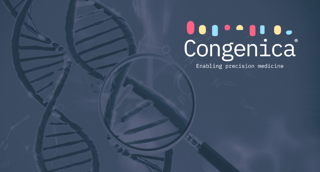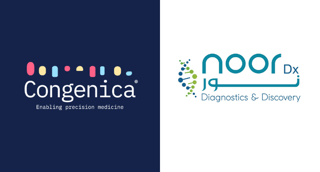... and the benefits of an early diagnosis
On 16th November 2022, Congenica hosted a webinar to discuss the real costs of rare disease. Andrea Haworth, Lead Clinical Scientist for Rare Disease at Congenica, was joined by Abbey Hauser, Rare Disease Patient Advocate and a Board Member at the EveryLife Foundation for Rare Diseases, and Lynsey Kumar Chediak, MSc Associate Director at Medicines360, Rare Disease Patient Advocate and Congenica Patient Advocacy and Engagement Board Member.
.png?width=1920&height=1080&name=Webinar%20the%20cost%20of%20rare%20disease%20(2).png)
Abbey and Lynsey talked openly about the emotional and financial costs of rare disease to patients, their families, healthcare providers and the wider economy. They shared their personal experiences and discussed the very real economic and psychosocial benefits of an early diagnosis. Together, the panel discussed what needs to be done to help more rare disease patients benefit from an early diagnosis.
If you have missed this webinar or would like to watch it again, please click on the link below.
Webinar topics
Diagnostic odyssey
Today, there are more than 300 million individuals around the world living with a rare disease. One of the first big challenges they face is getting an accurate diagnosis. While many live for months or years with an undiagnosed condition, some may never know what causes their symptoms. A 2009 survey of eight relatively common rare diseases in Europe showed that 25% of patients waited anywhere between 5 to 30 years for a diagnosis, but during that time only 60% of patients received a correct result.
The financial burden
For rare disease patients whether diagnosed or undiagnosed, and the healthcare providers caring for them, the financial burden of rare disease is enormous. A report from the EveryLife Foundation for Rare Diseases found that the direct medical and indirect costs for 15.5 million people with rare diseases in the United States (US) was almost $1Tn. In total there are 25 – 30 million people living in the US with a rare disease, so the actual cost is significantly higher.
The hope of genomics
DNA variants in single genes, the recent advances in DNA sequencing and decrease in sequencing costs offer hope for more rapid and accurate diagnoses. And while there are not always treatments available for a rare disease, a diagnosis signals the end of unnecessary clinical assessments and the opportunity to find relevant experts, support networks and others with the same disease.
Find out how Congenica is enabling healthcare providers to deliver diagnoses, faster and more accurately than before, on our case studies page.
.png)


.png?width=320&height=192&name=Add%20a%20title%20(2).png)
